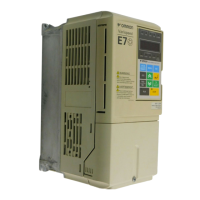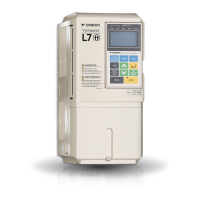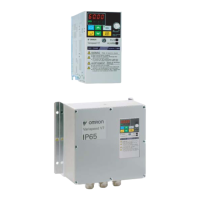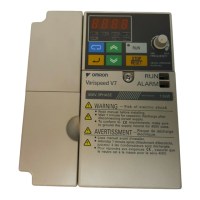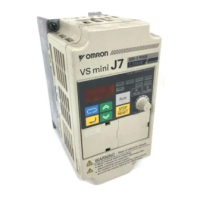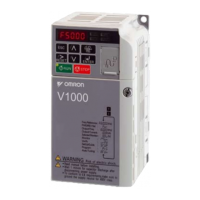4-15
4
* The setting is given for 200 V Class Inverters. Double the voltage for 400 V Class Inverters.
• Do not change the Torque Compensation Gain (C4-01) from its default setting of 1.00 when using Open
Loop Vector control.
• If speeds are inaccurate during regeneration in Open Loop Vector control, enable Slip Compensation dur-
ing regeneration (C3-04 = 1).
• Use slip compensation to improve speed control during V/f control (A1-02 = 0).
Set the Motor Rated Current (E2-01), Motor Rated Slip (E2-02), and Motor No-load Current (E2-03), and
then adjust the Slip Compensation Gain (C3-01) between 0.5 and 1.5. The default setting for V/f control is
C3-01 = 0.0 (slip compensation disabled).
• To improve speed response and stability in V/f control with a PG (A1-02 = 1), set the ASR parameters
(C5-01 to C5-05) to between 0.5 and 1.5 times the default value. (Normally it is not necessary to adjust this
setting.)
Open Loop
Vector con-
trol (A1-02
= 2)
Carrier frequency
selection (C6-02)
• Reducing motor
magnetic noise
• Controlling hunting
and vibration at low
speeds (10 Hz or
less)
Depends
on capac-
ity
0 to
default
• Increase the setting if
motor magnetic noise is
high.
• Reduce the setting if hunt-
ing or vibration occurs at
low speeds.
Middle output fre-
quency voltage
(E1-08)
Minimum output fre-
quency voltage
(E1-10)
• Improving torque at
low speeds
• Controlling shock at
startup
Depends
on capac-
ity and
voltage
Default to
Default +
5V
*
• Increase the setting if
torque or speed response is
low.
• Reduce the setting if shock
at startup is large.
Closed
Loop Vec-
tor control
(A1-02 = 3)
ASR proportional gain
1 (C5-01) and
ASR proportional gain
2 (C5-03)
• Torque and speed
response
• Controlling hunting
and vibration
20.00
10.00 to
50.00
• Increase the setting if
torque or speed response is
low.
• Reduce the setting if hunt-
ing or vibration occurs.
ASR integral time 1
(high-speed) (C5-02)
and
ASR integral time 2
(low-speed) (C5-04)
• Torque and speed
response
• Controlling hunting
and vibration
0.500 s
0.300 to
1.000 s
• Reduce the setting if
torque or speed response is
low.
• Increase the setting if hunt-
ing or vibration occurs.
ASR switching fre-
quency (C5-07)
Switching the ASR
proportional gain and
integral time accord-
ing to the output fre-
quency
0.0 Hz
0.0 to max.
output fre-
quency
Sets the output frequency at
which to change the ASR
proportional gain and inte-
gral time when the same val-
ues cannot be used for high-
speed and low-speed opera-
tion.
ASR primary delay
time (C5-06)
• Controlling hunting
and vibration
0.004 s
0.004 to
0.020
Increase the setting if
machine rigidity is low and
the system vibrates easily.
Carrier frequency
selection (C6-02)
• Reducing motor
magnetic noise
• Controlling hunting
and vibration at low
speeds (3 Hz or less)
Depends
on the
capacity.
2.0 kHz to
default
• Increase the setting if
motor magnetic noise is
too high.
• Reduce the setting if hunt-
ing or vibration occurs at
very low to middle-range
speeds.
Table 4.4 Adjusted Parameters (Continued)
Control
Method
Name (Parameter
Number)
Influence
Factory
Setting
Recom-
mended
Setting
Adjustment Method
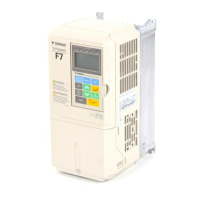
